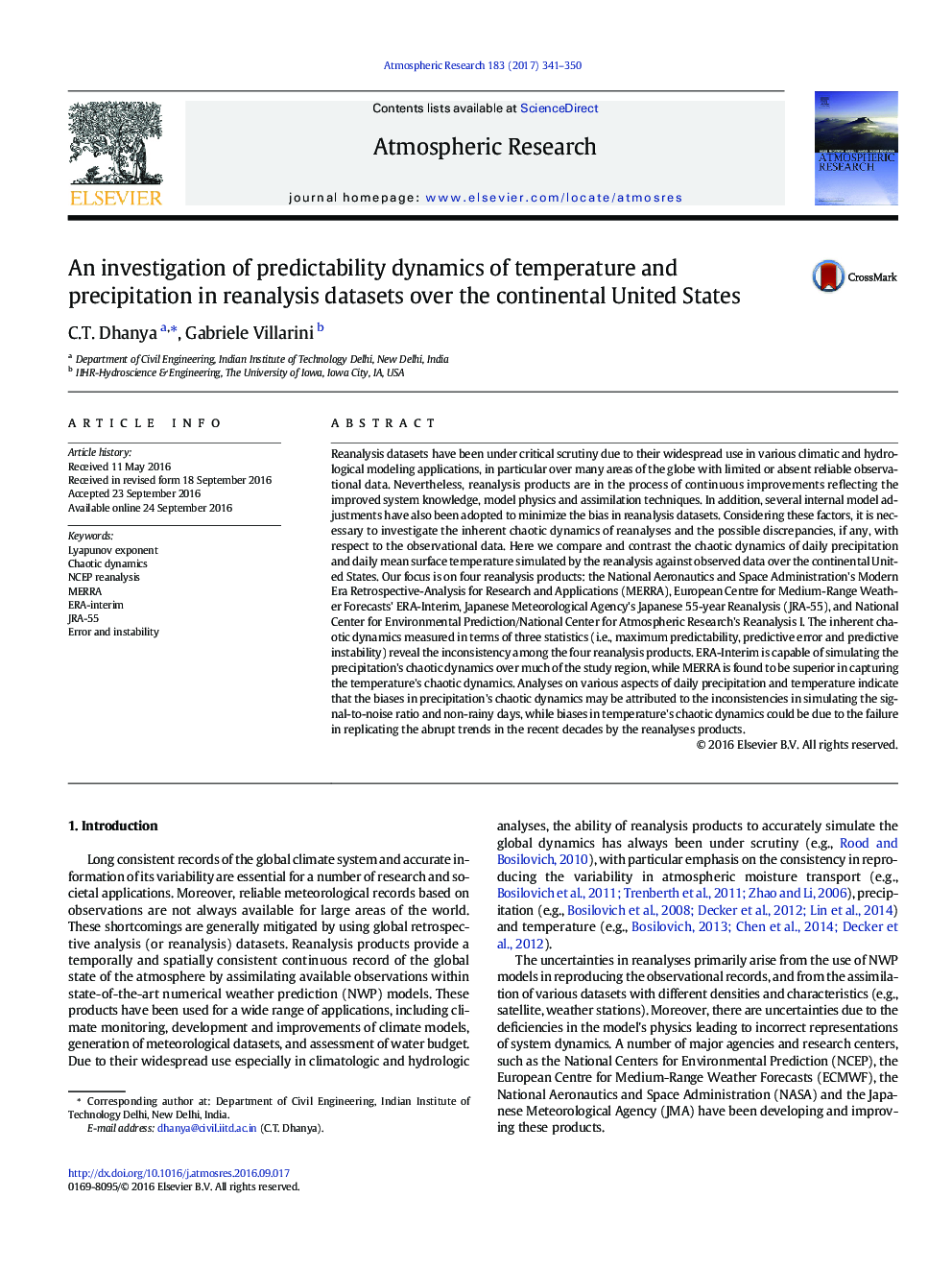| Article ID | Journal | Published Year | Pages | File Type |
|---|---|---|---|---|
| 4449571 | Atmospheric Research | 2017 | 10 Pages |
•Chaotic dynamics of precipitation and temperature from reanalyses are investigated.•ERA-Interim closely replicates observed precipitation's chaotic dynamics.•MERRA is superior in capturing the temperature's chaotic dynamics.•Inaccurate representation of precipitation characteristics by the reanalysis products•Reanalyses fail to replicate the abrupt temperature trends in the recent decades.
Reanalysis datasets have been under critical scrutiny due to their widespread use in various climatic and hydrological modeling applications, in particular over many areas of the globe with limited or absent reliable observational data. Nevertheless, reanalysis products are in the process of continuous improvements reflecting the improved system knowledge, model physics and assimilation techniques. In addition, several internal model adjustments have also been adopted to minimize the bias in reanalysis datasets. Considering these factors, it is necessary to investigate the inherent chaotic dynamics of reanalyses and the possible discrepancies, if any, with respect to the observational data. Here we compare and contrast the chaotic dynamics of daily precipitation and daily mean surface temperature simulated by the reanalysis against observed data over the continental United States. Our focus is on four reanalysis products: the National Aeronautics and Space Administration's Modern Era Retrospective-Analysis for Research and Applications (MERRA), European Centre for Medium-Range Weather Forecasts' ERA-Interim, Japanese Meteorological Agency's Japanese 55-year Reanalysis (JRA-55), and National Center for Environmental Prediction/National Center for Atmospheric Research's Reanalysis I. The inherent chaotic dynamics measured in terms of three statistics (i.e., maximum predictability, predictive error and predictive instability) reveal the inconsistency among the four reanalysis products. ERA-Interim is capable of simulating the precipitation's chaotic dynamics over much of the study region, while MERRA is found to be superior in capturing the temperature's chaotic dynamics. Analyses on various aspects of daily precipitation and temperature indicate that the biases in precipitation's chaotic dynamics may be attributed to the inconsistencies in simulating the signal-to-noise ratio and non-rainy days, while biases in temperature's chaotic dynamics could be due to the failure in replicating the abrupt trends in the recent decades by the reanalyses products.
